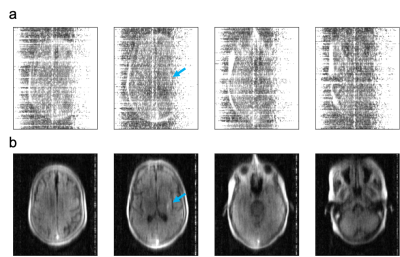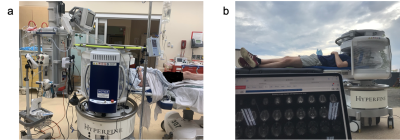Hadrien Dyvorne1, Todd Rearick1, Michael Poole1, Carole Lazarus1, Pierre Weiss2, Laura Sacolick1, Jeremy Jordan1, Cedric Hugon1, William Mileski1, Gang Chen1, Rafael O'Halloran1, Chris McNulty1, Jonathan Lowthert1, Anne Nelson1, Aristito Lorenzo1, Nicholas Zwart1, Prantik Kundu1, Scott Martin1, Andrei Loutchouk1, E. Brian Welch1, Samantha By1, Bradley Cahn3, Matthew Yuen3, Mercy Mazurek3, Anjali Pranhat3, Matthew Rosen4, Kevin Sheth3, and Jonathan Rothberg1
1Hyperfine, Guilford, CT, United States, 2ITAV, CNRS, Toulouse, France, 3Neurology, Yale University School of Medicine, New Haven, CT, United States, 4Athinoula A. Martinos Center for Biomedical Imaging, Massachusetts General Hospital, Charlestown, MA, United States
1Hyperfine, Guilford, CT, United States, 2ITAV, CNRS, Toulouse, France, 3Neurology, Yale University School of Medicine, New Haven, CT, United States, 4Athinoula A. Martinos Center for Biomedical Imaging, Massachusetts General Hospital, Charlestown, MA, United States
We present interference rejection methods that allow MRI data to be acquired outside a shielded room, in the presence of electromagnetic interference from electronic devices. We show high rejection performance for images acquired at the patient bedside.

3D FLAIR images of a patient with a diagnosis of stroke, acquired at the bedside without RF shielded room. Images were reconstructed without (a) and with (b) the proposed interference rejection method. Average rejection was 29 dB (range 12-39 dB). Arrow points to pathology (distal M1 occlusion).

Example of portable scanner usage outside of a shielded room. Neurointensive Care Unit (a), with the following equipment surrounding the patient: IV drip, EKG, ancillary emergency equipment (vitals, oxygen/gas hook ups). Scanning a healthy volunteer outdoor (b) while operating the system with a power generator.
